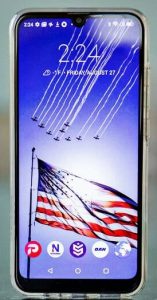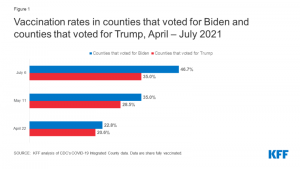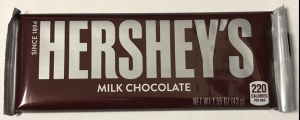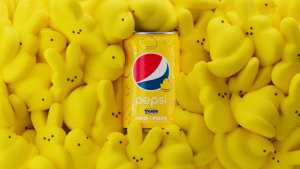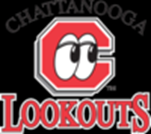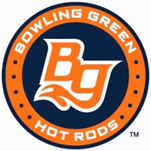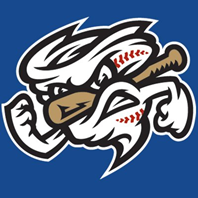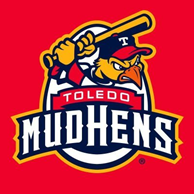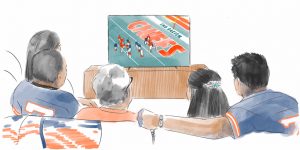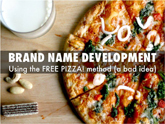Mark
Freedom Phone – A Master Class in Branding and Positioning
A 22-year-old Bitcoin Millionaire has launched a “smartphone for Conservatives” called The Freedom Phone. Here is the New York Times article that details his effort.
The name is great. The positioning is great (liberate Americans from their “Big Tech overlords”). The marketing has been great (his launch video has over 1.8 million views). And he’s already sold over $6 million worth of these phones.
The problem? The phones suck. CNET, the product-review site, said the $500 device appeared to be “nearly on par with a $200 budget Android phone.” Ouch.
The NYT article explains some of the issues that arise when trying to launch a new phone without the assistance of the major tech companies. But I have no sympathy for anyone who is dumb enough to buy this. Or any of several products marketed via the Conservative media these days (Ivermectin anyone?).
But you’ve got to admire the straightforward naming and positioning. Credit where credit is due.
Take The Trump Vaccine!
The Delta variant of COVID is spreading like wildfire in the US and is having a devastating effect on the unvaccinated. At the present time, 99% of COVID deaths are among unvaccinated people. In fact, a recent Washington Post opinion piece estimated that the odds of dying from COVID if you have been vaccinated are lower than the odds of dying by getting hit by lightning.
Yet only about 50% of people in the US are fully vaccinated and the rate of new vaccinations is slowing down dramatically. Furthermore, there is a widening divide of vaccination rates between Democratic voters and Republican voters as shown below:
Sarah Sanders, former White House Press Secretary and current candidate for Governor of Arkansas, may have identified a novel way to nudge Republicans to get vaccinated. In this Washington Post article she urges Republicans to “Take The Trump Vaccine.”
Here is how it could work. The Moderna and J & J vaccines were developed under the Operation Warp Speed initiative created by the Trump Administration. The Pfizer vaccine was not in the Operation Warp Speed program. In order to overcome vaccine hesitancy among Republicans, the government should rebrand some of the Moderna and J & J vaccines as Trump Vaccine and offer it exclusively to Republicans. Everyone likes to have exclusive products, and a vaccine just for Trump supporters could get vaccine hesitant people to roll up their sleeves.
Branding can help save lives.
Hershey’s Versus Hershey’s
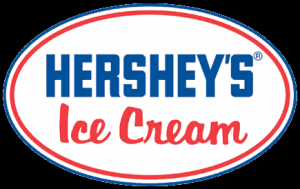
Would you guess that the same company that makes Hershey’s Ice Cream also makes Hershey’s Chocolate? I did. However, despite being founded in the same city, in the same year and having the same name, Hershey’s ice cream and Hershey’s chocolate have no affiliation.
The Hershey Chocolate Company was founded by Milton S. Hershey in 1894 as a subsidiary of his Lancaster Caramel Company. Hershey Creamery Company, also known as Hershey’s Ice Cream, was also founded in 1894 by Jacob Hershey (not a relative of Milton Hershey) and four of his brothers in 1894.
Both companies have been engaged in on-again, off-again litigation for about a century over the Hershey’s name and trademark (Hershey Chocolate filed the first lawsuit between these parties in 1921). Eventually they reached a settlement where each company was to disclaim the other. Today, the ice cream company’s website notes that it is “not affiliated with Hershey’s Chocolate” at the bottom of its homepage (©PRODUCTS OF HERSHEY CREAMERY CO. − NOT AFFILIATED WITH HERSHEY’S CHOCOLATE). Hershey’s Chocolate does not return the favor as they make no mention of Hershey’s Ice Cream.
Would the Hershey’s name be able to be shared in this manner if both companies tried to get the trademark today? I think it is doubtful because of the similarity of the goods offered. Nevertheless, this stands as an example of how two very similar names can coexist.
Domain Considerations vs Strategic Name Development
I have been approached numerous times about developing a name “…with a .com domain available and no more than 6 letters” or something like that.
Limiting the number of letters and requiring a .com domain means you will end up with a random letter name/domain such as ksnhent.com (which is available!).
Clients who insist on making domain availability the primary reason for choosing a name are making a huge mistake.
A far better approach is to hone your brand’s strategy and test it with consumers until you find the positioning that is going to make all the difference in your business, then develop a name based on that positioning.
David Ogilvy once said “The results of your campaign depend less on how we write your advertising than on how your product is positioned.” The same is true for your name. Spend time developing a positioning that rings the bell with consumers and then go find the perfect name that brings that positioning to life.
Sound like a difficult thing to do? Not really. I know I am biased by my 25+ years of experience in building great consumer brands, but this task is not difficult. Time consuming? Yes. At times painful? Yes. Expensive? Could be. But in the end, the process of honing the brand positioning and using that as a basis for name development will pay dividends for years to come.
The one downside is, it is unlikely that a name based on a strategic foundation will have a short .com domain available. However, you can add modifiers to the beginning or end of the name to get a .com domain.
Here is an example. Let’s say you have developed a strategically based name of “Regal” for your brand name. Of course, www.regal.com is already taken. But here are a few ideas for domains that are available for a minimal cost:
HeyRegal.com
BestRegal.com
RegalQuick.com
RegalForever.com
RegalAllDay.com
RegalCalling.com
RegalEtc.com
HelloRegal.com
RegalForAll.com
Do It Yourself With Fiverr
I’ve been asked several times recently if I could help a client design a logo for a name we developed for them. While that is certainly doable, I tell clients that is not in our wheelhouse. We are name developers and they would be better served by hiring a qualified graphics designer to bring their name to life.
My “go to” solution for logo designs is Fiverr. If you are not familiar with Fiverr, it is a global network of freelancers that provide wonderful support services for businesses (at very reasonable prices…starting at $5). Here is an easy way to search for what you are looking for on Fiverr:
For logo design, I can attest that I’ve used several designers on Fiverr and have been happy with the results. In particular, when you get to the Fiverr site, search for antonclevela97 who has done excellent work for me over the years!
Please note, this post contains affiliate links. If you use these links to buy something we may earn a commission (at no cost to you). Thanks.
Why Not Peepsi?
Pepsi and Peeps are collaborating on a new drink that combines the taste of a Pepsi with the “pillowy-soft and sweet” marshmallow flavor of Peeps. The new cola is named “Pepsi x Peeps.”
Several bloggers are asserting that Pepsi should have named the drink “Peepsi.” Clever idea, but both Pepsi and Peeps were smart enough to avoid that.
Using the name “Peepsi” would dilute both the Pepsi and the Peeps trademarks. In layman’s terms, naming this product “Peepsi” would be the legal equivalent of shooting yourself in the foot because you would weaken your existing trademarks and provide a perfect example of how a competitor could legally get close to the Pepsi or Peeps trademarks.
For example, if “Peepsi” were the name of this product, how could Pepsi hold back a competitor from launching a Pepsii or a Pipsee product?
The first rule of branding should be “do no harm to your own brand.”
The Annual Minor League Baseball Team Name Report
Every year I do a blog post on the interesting names of minor league baseball teams. Here is this year’s crop of names (all images By Source, Fair use, Wikipedia):
Chattanooga Lookouts – Naming a baseball team the Lookouts might seem odd, but Lookout Mountain is just a few miles south of the city and is a famous Civil War battle site. When the sky is clear and with a good set of binoculars you can see up to 7 different states from the summit. The Lookouts are one of the oldest teams in the league, having played in the Southern League off-and-on since 1885 and they have kept the Lookouts name the entire time.
Richmond Flying Squirrels – When the team moved to town in 2009, the Richmond Flying Squirrels name was chosen through a Richmond Times-Dispatch readers’ “name-the-team-contest.” While I am generally not a fan of naming contests, this one had a good result. Other finalist names were the Rock Hoppers, Hambones, Rhinos, Flatheads, and Hush Puppies. Fans love it too, as Richmond has one of the highest levels of merchandise sales among minor league teams.
Bowling Green Hot Rods – This name is a nod to the presence of the automotive industry in the area, which includes the National Corvette Museum, Holley Carburetor, Beech Bend Raceway, and the Bowling Green Assembly Plant. Their mascot is an anamorphic bear named Axle.
Omaha Storm Chasers – The team has been the Triple-A affiliate of the Kansas City Royals since their inception in 1969 and were originally known as the Omaha Royals. In 1998 when they joined the Pacific Coast League they were briefly known as the Omaha Golden Spikes (1999–2001) before reverting to the Royals name. They rebranded as the Storm Chasers in 2011 as a result of a fan naming contest. What else would you call a team based in Tornado Alley?
Toledo Mud Hens – Professional baseball had been played off and on in Toledo since 1883, but the Mud Hens era began in 1896 with the “Swamp Angels”, who played in the Interstate League. They played in Bay View Park, which was located near marshland inhabited by American coots, also known as “mud hens.” For this reason, the local press soon dubbed the team the “Mud Hens”—a nickname that has stuck to Toledo baseball teams for all but a few years since. The current incarnation of the Toledo Mud Hens started when an International League franchise moved to Toledo from Richmond, Virginia in 1965. The franchise became famous when Gene Cook became the general manager and got Jamie Farr to incorporate the Mud Hens in Farr’s M*A*S*H character’s background. Toledo has some of the highest sales of team merchandise in the minor leagues.
Someday I hope to be involved in a minor league baseball naming project. Put me in coach, I’m ready to play…today!
Marketing Euphemisms – Clean Wine
eu·phe·mism
/ˈyo͞ofəˌmizəm/
noun
a mild or indirect word or expression substituted for one considered to be too harsh or blunt when referring to something unpleasant or embarrassing.
We all know a euphemism when we see it (e.g., being downsized instead of being fired; a correctional facility instead of a jail).
Sometimes marketers get a bit carried away in creating euphemisms to enhance their story. For example, consider the term “clean wine.” The Wonderful Wine Co. is trying to latch onto the “clean diet” trend by calling their wine “clean wine.” Here is how they define a “clean wine”:
• PESTICIDE-FREE
• VEGAN
• LOW CARB
• LOW SUGAR
• PALEO
• KETO
• LOW SULFITE
• SUSTAINABLY-FARMED
• ORGANIC GRAPES (Grapes are certified organic by the CCOF whenever possible)
We’ve had wines produced in sustainable fashion using organic grapes that meets these attributes for a while now, so clearly “clean wine” is a marketing euphemism that lacks uniqueness.
Furthermore, they advertise that their wine tastes like:
• TASTES LIKE DOLPHIN RIDES AND BEING PROMOTED TO HEAD ASTRONAUT
• TASTES LIKE SHOOTING STARS, LONG NAPS, AND FINDING TWENTY BUCKS
• TASTES LIKE MAGIC HOUR, BEING RIGHT, AND BEATING THE HIGH SCORE
Trying too hard to sound trendy? I think so.
The Cleveland Baseball Team (Formerly The Cleveland Indians)
The Cleveland Indians just announced that they will change their name. The Team spokesperson suggested they would use input from the public to develop a new name. Here we go again!
Public naming contests used to be a reasonable idea. However, today naming contests quickly become an effort to come up with really stupid names, then vote those stupid names into the lead. As a reminder, Boaty McBoatface was the people’s choice in a 2016 contest to name a research ship in the U.K.
CBS Sports came up with a few options that reflect the history of the team: Cleveland Spiders, Cleveland Naps, Cleveland Blues.
Or maybe go with something more current and trendy like the Cleveland Rockers (the Rock and Roll Hall of Fame is a big attraction in Cleveland).
Just don’t expect a public naming contest to generate anything positive…or else your team will be called “The Flaming Cuyahogas.”
Racist Branding?
Notice the juxtaposition of the Chiefs branding with the “End Racism” end zone printing. The irony in this image is stunning!
GABRIELLA TRUJILLO
In 2020 there has been a strong push for sports teams to change their branding if they are using a Native American name as a team mascot. Earlier this year the Washington Redskins changed to The Washington Football Team (I bet merchandise sales are not big for that moniker).
However, in a recent article on fivethirtyeight.com (https://fivethirtyeight.com/features/hundreds-of-schools-are-still-using-native-americans-as-team-mascots/) Hope Allchin notes that there are some sports teams that are fighting this trend.
Most states allow the use of Native American mascot names. Maine is the only state that banned it. A few years ago the NCAA adopted regulations indicating that teams with “hostile and abusive racial/ethnic/national origin mascots, nicknames or imagery” would be prevented from hosting NCAA championship events and required to use equipment that didn’t display that imagery in championship games. But there is a loophole. The NCAA allows Native American mascot names if the name is supported by a local Indigenous tribe. For example, because a single band of the Seminole tribe — the band that resides in Florida — supports the use of the Seminole mascot, Florida State University can continue its use of the Seminole mascot.
Another example of continued use of Native American mascots is those used by tribal high schools where students are primarily Native Americans. In this instance, Native American mascots serve as cultural identification rather than cultural appropriation. Around 2 percent of Native mascots are used at tribal high schools.
But there are still holdouts such as the Kansas City Chiefs. While the Chiefs have instituted several efforts to reduce the appearance of being racist (e.g., no face painting or wearing of feather headdresses), they are sticking to the Chiefs nickname.
The Washington Redskins were forced to change their name through a combination of political and economic pressure from local politicians, sponsors and advertisers. FedEx, who is the naming rights sponsor of the FedEx Field where The Washington Football Team plays, was a leader in getting ownership to make the change. Until the Chiefs organization receives similar economic pressure from advertisers and sponsors, they will not change. We will see how this plays out!
